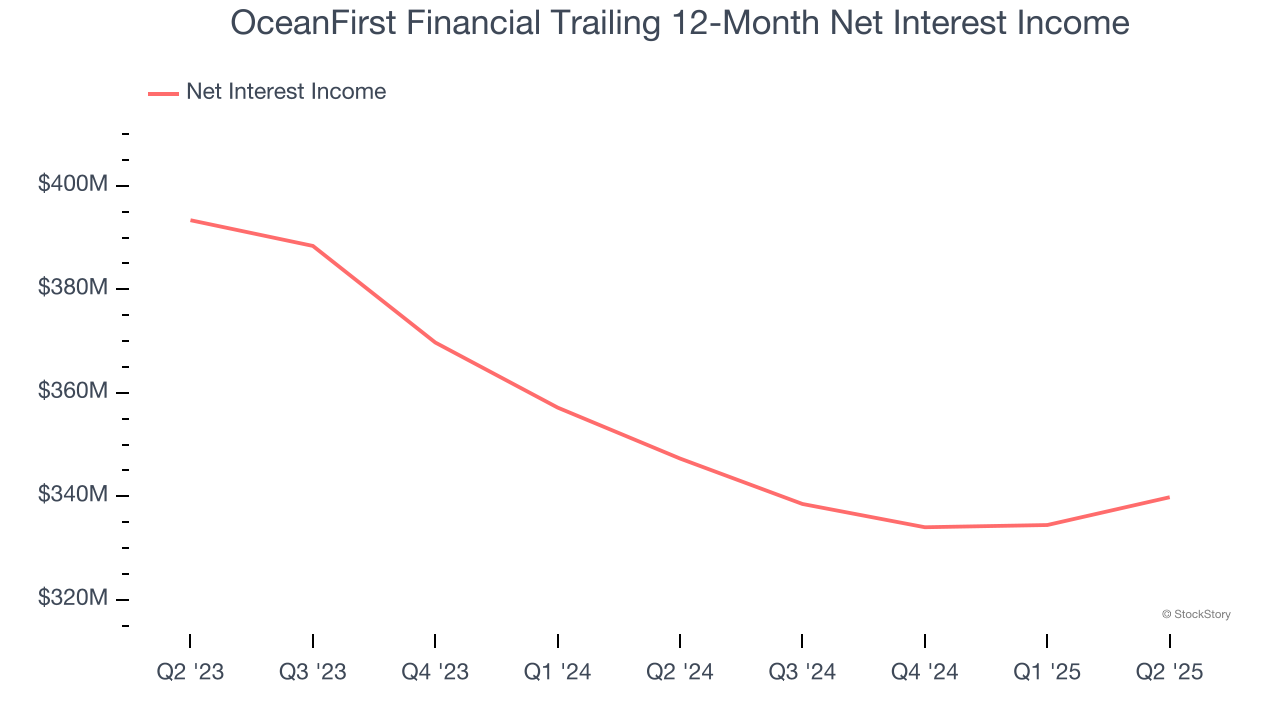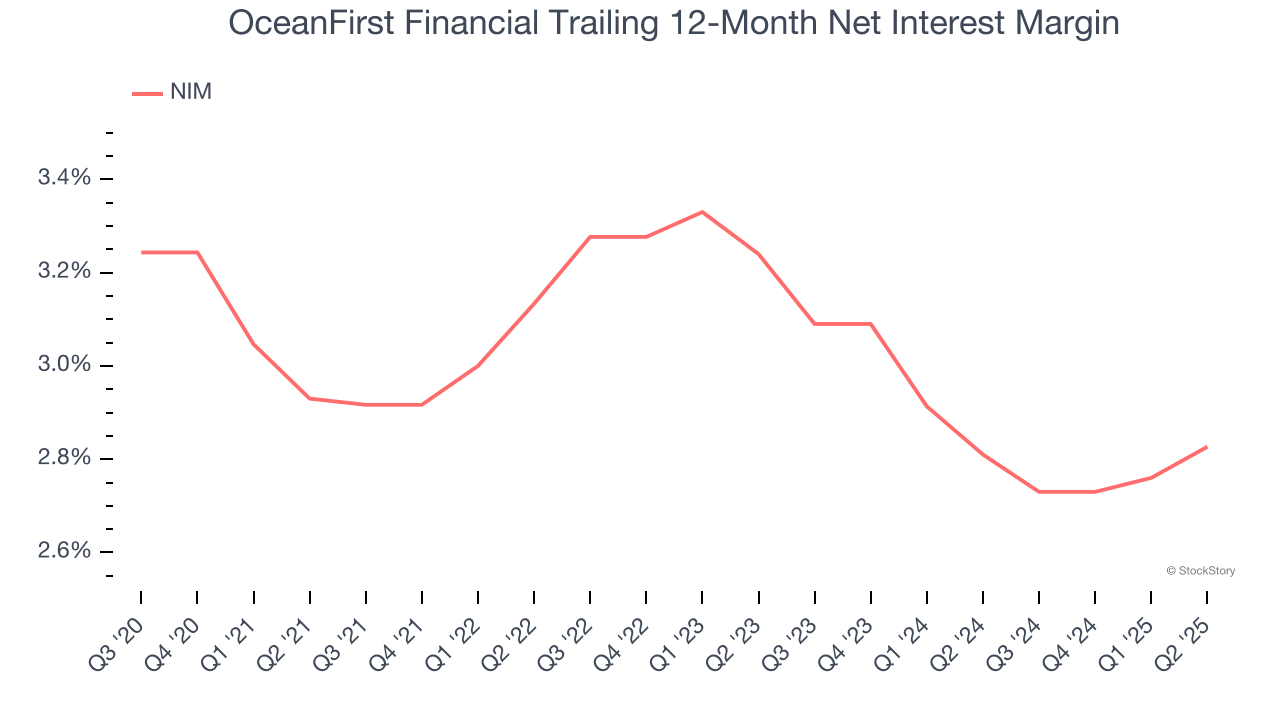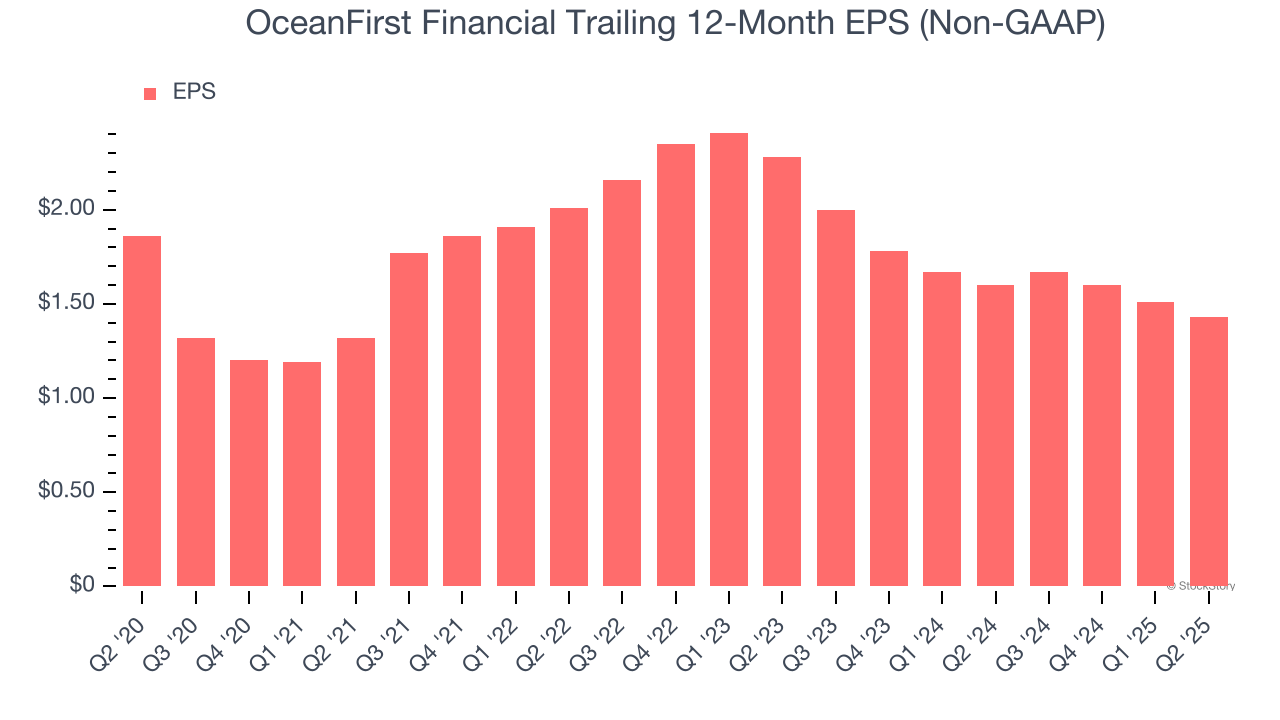
OceanFirst Financial has been treading water for the past six months, recording a small return of 2.4% while holding steady at $18.18. The stock also fell short of the S&P 500’s 9.7% gain during that period.
Is now the time to buy OceanFirst Financial, or should you be careful about including it in your portfolio? Check out our in-depth research report to see what our analysts have to say, it’s free.
Why Do We Think OceanFirst Financial Will Underperform?
We're swiping left on OceanFirst Financial for now. Here are three reasons you should be careful with OCFC and a stock we'd rather own.
1. Net Interest Income Points to Soft Demand
Markets consistently prioritize net interest income over non-recurring fees, recognizing its superior quality compared to the more unpredictable revenue streams.
OceanFirst Financial’s net interest income has grown at a 1.9% annualized rate over the last five years, much worse than the broader banking industry and slower than its total revenue.

2. Net Interest Margin Dropping
Net interest margin (NIM) represents how much a bank earns in relation to its outstanding loans. It's one of the most important metrics to track because it shows how a bank's loans are performing and whether it has the ability to command higher premiums for its services.
Over the past two years, OceanFirst Financial’s net interest margin averaged 2.8%. Its margin also contracted by 41.3 basis points (100 basis points = 1 percentage point) over that period.
This decline was a headwind for its net interest income. While prevailing rates are a major determinant of net interest margin changes over time, the decline could mean that OceanFirst Financial either faced competition for loans and deposits or experienced a negative mix shift in its balance sheet composition.

3. EPS Trending Down
We track the long-term change in earnings per share (EPS) because it highlights whether a company’s growth is profitable.
Sadly for OceanFirst Financial, its EPS declined by 5.1% annually over the last five years while its revenue grew by 3.2%. This tells us the company became less profitable on a per-share basis as it expanded.

Final Judgment
We cheer for all companies supporting the economy, but in the case of OceanFirst Financial, we’ll be cheering from the sidelines. With its shares underperforming the market lately, the stock trades at 0.6× forward P/B (or $18.18 per share). While this valuation is optically cheap, the potential downside is huge given its shaky fundamentals. There are better investments elsewhere. Let us point you toward one of our top software and edge computing picks.
Stocks We Like More Than OceanFirst Financial
Trump’s April 2025 tariff bombshell triggered a massive market selloff, but stocks have since staged an impressive recovery, leaving those who panic sold on the sidelines.
Take advantage of the rebound by checking out our Top 6 Stocks for this week. This is a curated list of our High Quality stocks that have generated a market-beating return of 183% over the last five years (as of March 31st 2025).
Stocks that made our list in 2020 include now familiar names such as Nvidia (+1,545% between March 2020 and March 2025) as well as under-the-radar businesses like the once-small-cap company Exlservice (+354% five-year return). Find your next big winner with StockStory today.
StockStory is growing and hiring equity analyst and marketing roles. Are you a 0 to 1 builder passionate about the markets and AI? See the open roles here.





